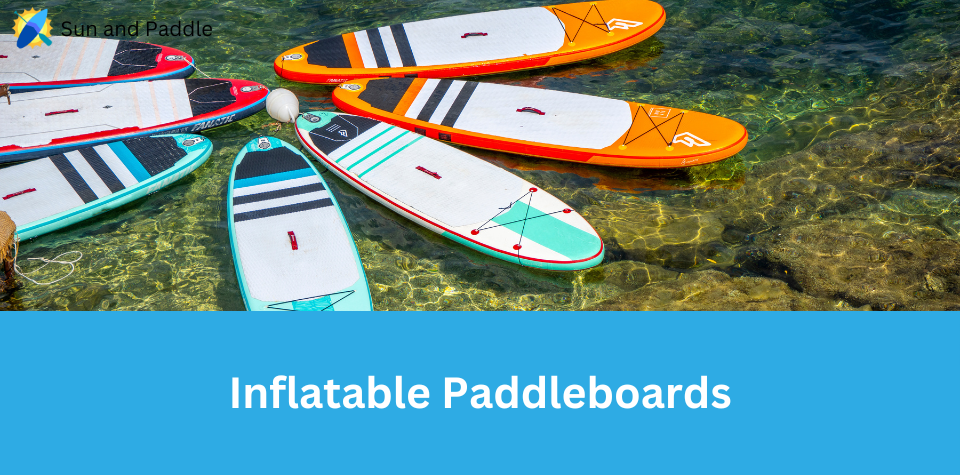If you’re looking for a fun and exciting way to explore the water, look no further than inflatable paddleboards. These versatile boards offer a unique experience that can be enjoyed by people of all ages and skill levels.
Whether you’re looking to paddle for exercise, surf the waves, or practice yoga on the water, an inflatable paddleboard can help you achieve your goals.
One of the biggest benefits of inflatable paddleboards over traditional rigid boards is their portability. When deflated, these boards can easily fit into a backpack or duffel bag, making them easy to transport to your favorite waterway.
Additionally, inflatable paddleboards are often more durable than their rigid counterparts. They are constructed with high-quality materials that can withstand the wear and tear of regular use.
Key Takeaways
- Inflatable paddleboards offer a fun and exciting way to explore the water.
- These boards are highly portable and durable, making them a great choice for people on the go.
- Inflatable paddleboards are versatile and can be used for a wide variety of activities, from paddling and surfing to yoga and more.
Benefits of Inflatable Paddleboards over Rigid
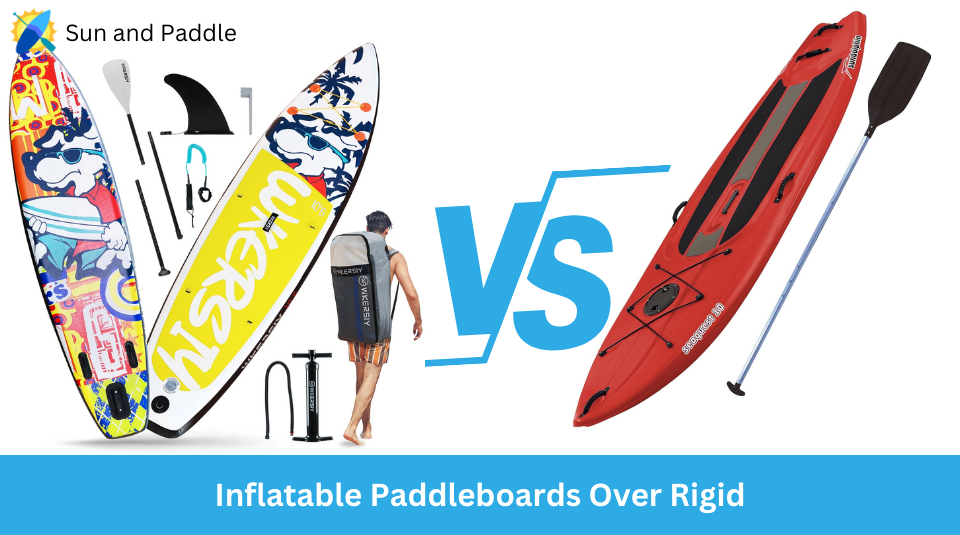
When it comes to paddleboarding, there are two main types of boards: rigid and inflatable. While both have their merits, inflatable paddleboards have several benefits over their rigid counterparts. Here are a few reasons why you might want to consider investing in an inflatable paddleboard:
Inflatable Paddleboards Don’t Dent Like Epoxy SUPs
One of the biggest advantages of inflatable paddleboards is that they are far more durable than rigid boards. Epoxy SUPs are prone to dings and dents, which can be costly to repair.
Inflatable paddleboards, on the other hand, are made from tough, puncture-resistant materials that can withstand a lot of abuse. This means you can paddle with confidence, knowing that your board can handle just about anything you throw at it.
The Impact of a Tumble on an Inflatable SUP Is Less Painful
If you’re new to paddleboarding, you’re bound to take a tumble or two. When you fall off a rigid board, the impact can be jarring and painful.
Inflatable paddleboards, however, are much softer and more forgiving. The air inside the board acts as a cushion, so if you fall off, you’re less likely to get hurt. This can be especially important if you’re paddling in rough or choppy water.
Inflatable Paddleboards Are Easier to Travel With
One of the biggest advantages of inflatable paddleboards is that they are incredibly portable. When deflated, they can be rolled up into a compact bundle that can easily fit in the trunk of your car or the overhead compartment of an airplane.
This makes them ideal for paddlers who like to travel or who don’t have a lot of storage space at home.
Inflatables Perform Better in Different Environments
Inflatable paddleboards are also more versatile than rigid boards. Because they are softer and more flexible, they can perform better in different environments.
For example, if you’re paddling in shallow water or over rocks and debris, an inflatable board is less likely to get damaged. They’re also great for paddling in choppy or windy conditions, as they tend to absorb the waves and provide a smoother ride.
They Are Lightweight
Finally, inflatable paddleboards are much lighter than rigid boards. This makes them easier to carry and maneuver, especially if you’re paddling alone.
What are Inflatable Paddle Boards Made Of?
Inflatable paddleboards, also known as iSUPs, are made of high-grade PVC material that is durable and lightweight. PVC stands for polyvinyl chloride, which is a synthetic plastic polymer.
This material is commonly used in various applications due to its strength, flexibility, and resistance to weather and water damage.
The PVC material used in inflatable paddleboards is reinforced with drop-stitch technology. This involves thousands of tiny threads that connect the top and bottom layers of the board.
This creates a rigid structure that can withstand the pressure of being inflated to high pressures.
In addition to PVC, some inflatable paddleboards also incorporate other materials such as nylon, polyester, or rubber. These materials may be used for the board’s surface or for additional reinforcement in high-stress areas such as the rails or fins.
Best Inflatable Paddle Boards for Different Activities
Choosing an Inflatable Paddleboard for SUP
When choosing an inflatable paddleboard for SUP, there are a few key factors to consider. These include the size and shape of the board, the materials it’s made from, and the overall quality of construction.
Best Inflatable Paddle Board for SUP: Ride MSL
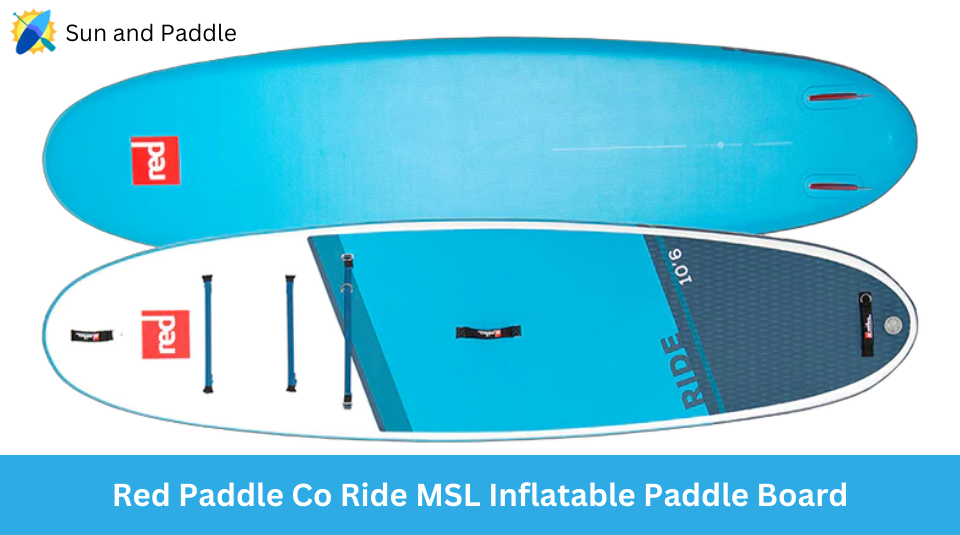
If you’re looking for a high-quality inflatable paddleboard for SUP, the Red Paddle Co Ride MSL is a great option.
This board is made from durable materials and features a stable, wide design that makes it easy to balance on. It also comes with a range of accessories, including a paddle, pump, and carrying bag, making it a great value for the price.
Best Inflatable Paddle Board for Beginners: Atoll 11’ Inflatable
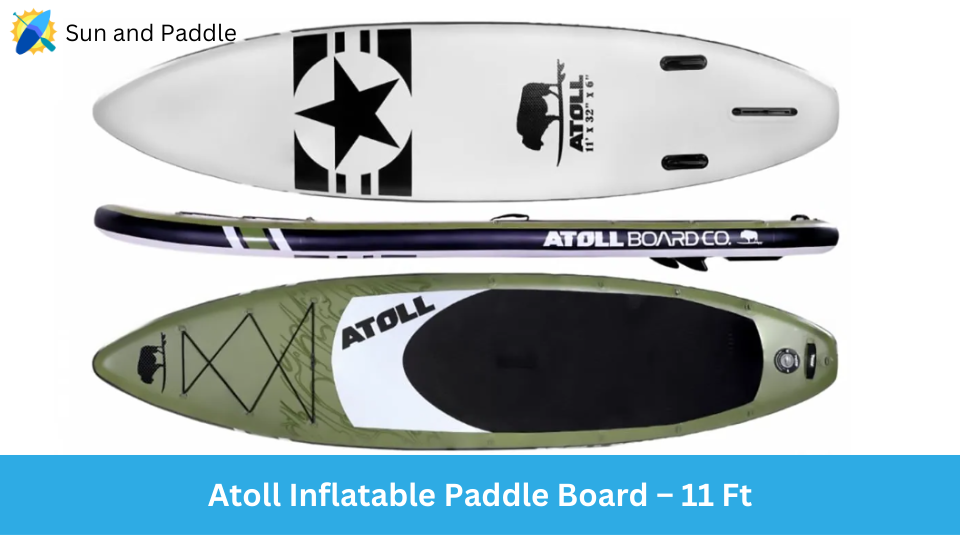
If you’re new to SUP and looking for an inflatable paddleboard that’s easy to use and affordable, the Atoll 11′ Inflatable is a great choice.
This board is lightweight and easy to maneuver, making it ideal for beginners. It also comes with a range of accessories, including a paddle, pump, and carrying bag, making it a great value for the price.
Choosing an Inflatable Paddleboard for Paddlesurfing
If you’re looking to take your paddlesurfing to the next level, investing in an inflatable paddleboard can be a great option for you.
Inflatable paddleboards offer a number of benefits over traditional hard boards, including ease of transportation and storage, durability, and affordability.
However, with so many options on the market, it can be overwhelming to choose the right one. Here are some factors to consider when choosing an inflatable paddleboard for paddlesurfing.
Best Inflatable Paddle Board for Paddlesurfing: Red Paddle Whip 8’10”
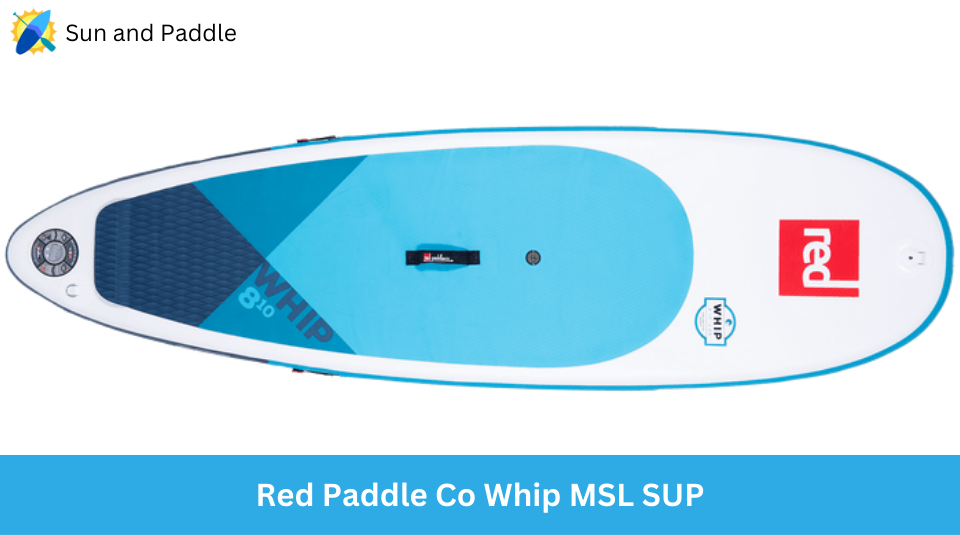
The Red Paddle Whip 8’10” is a top pick for paddlesurfers looking for an inflatable board.
This board is designed specifically for surfing, with a narrow tail and wide nose for increased maneuverability and stability. The board is made with high-quality materials and features a reinforced drop-stitch construction for added durability. It also comes with a backpack for easy transportation and storage.
When choosing an inflatable paddleboard for paddlesurfing, here are some other factors to consider:
- Board size: The size of the board will depend on your weight, skill level, and the type of waves you’ll be surfing. A longer board will provide more stability, while a shorter board will be more maneuverable.
- Board shape: The shape of the board will also affect its performance. A wider board will be more stable, while a narrower board will be more maneuverable.
- Board thickness: The thickness of the board will affect its buoyancy and stability. Thicker boards will be more stable, while thinner boards will be more responsive.
- Fin setup: The fin setup will affect the board’s maneuverability. A single fin setup will provide more stability, while a tri-fin setup will be more maneuverable.
How to Choose an Inflatable Paddleboard for Yoga
When choosing an inflatable paddleboard for yoga, there are a few key factors to consider. You want a board that is stable, durable, and has enough space for your yoga practice.
Best Inflatable Paddleboard for SUP Yoga: Sea Gods Infinite Mantra
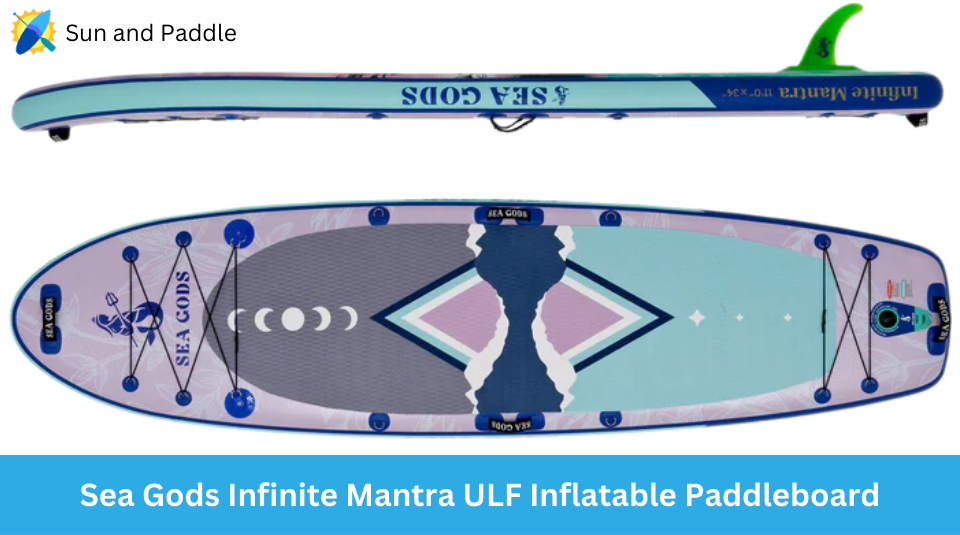
If you’re specifically looking for a paddleboard for SUP yoga, the Sea Gods Infinite Mantra is a great choice.
This board is designed with yoga in mind, with a wide and stable platform that allows you to move freely without worrying about tipping over. It’s also made from durable materials that can withstand regular use.
Here are some other factors to consider when choosing an inflatable paddleboard for yoga:
- Size: Look for a board that is wide and stable enough for your yoga practice. A board that is at least 32 inches wide and 10 feet long should provide enough space for most people.
- Thickness: A thicker board will be more stable and provide more cushioning for your joints. Look for a board that is at least 6 inches thick.
- Weight Capacity: Make sure the board can support your weight and the weight of any gear you may be carrying. Most boards have weight limits of around 250-300 pounds.
- Material: Look for a board made from durable materials like PVC or drop-stitch construction. This will ensure that your board can withstand regular use and last for years to come.
- Accessories: Consider what accessories come with the board, such as a paddle, pump, and carrying bag. A good paddle and pump can make a big difference in your overall experience.
Popular Inflatable Stand-UP Paddleboards
When it comes to inflatable stand-up paddleboards, there are many options available in the market. Here are some of the most popular inflatable stand-up paddleboards that you can consider:
Serenelife Inflatable Stand-Up Paddleboard
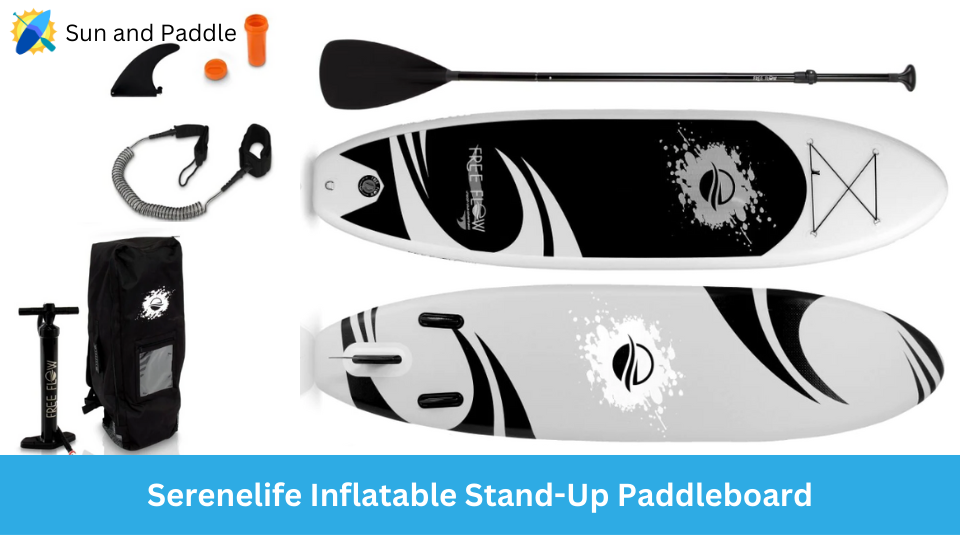
The Serenelife Inflatable Stand Up Paddle Board is a great option for beginners and intermediate paddlers.
It is 10 feet long and 30 inches wide, providing a stable platform for paddling. The board is made of military-grade PVC material, making it durable and resistant to punctures. The board comes with a pump, paddle, and storage bag, making it easy to transport and store.
Body Glove Oasis Stand-Up Paddleboard
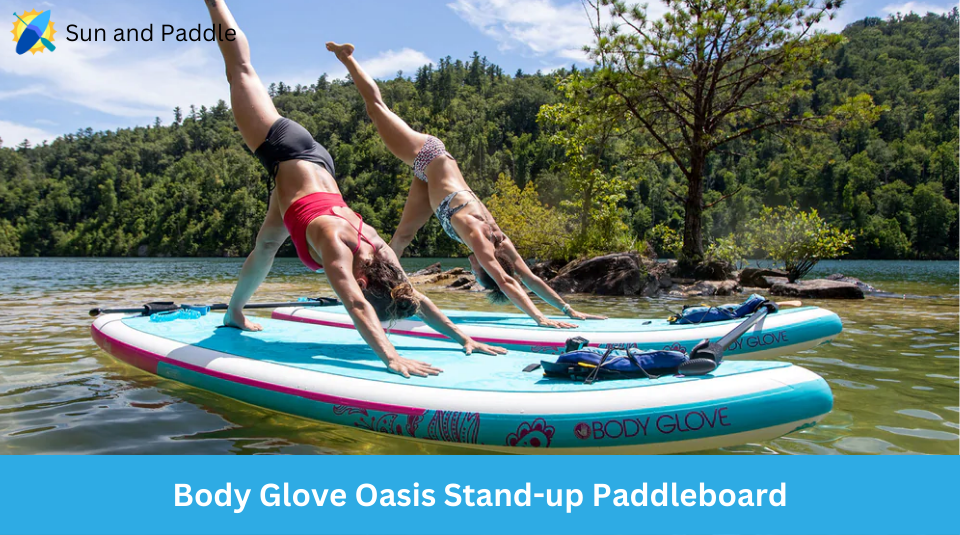
The Body Glove Oasis Stand Up Paddle Board is a versatile board that can be used for a variety of activities, including yoga, fishing, and touring.
The board is 11 feet long and 34 inches wide, providing a stable platform for all activities. The board is made of durable PVC material and comes with a pump, paddle, and storage bag.
ROC Stand-Up Paddleboard
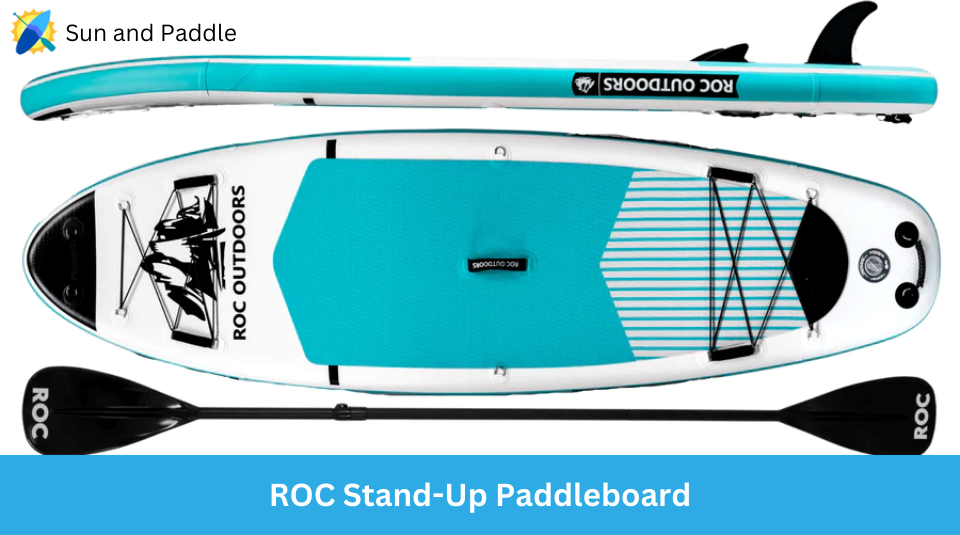
The Roc Stand Up Paddle Board is a great option for paddlers who want a board that is both durable and lightweight.
The board is made of military-grade PVC material and is 10 feet long and 32 inches wide. The board comes with a pump, paddle, and storage bag, making it easy to transport and store.
iROCKER All Around 10′ ULTRA™ 2.0 Inflatable Paddleboard
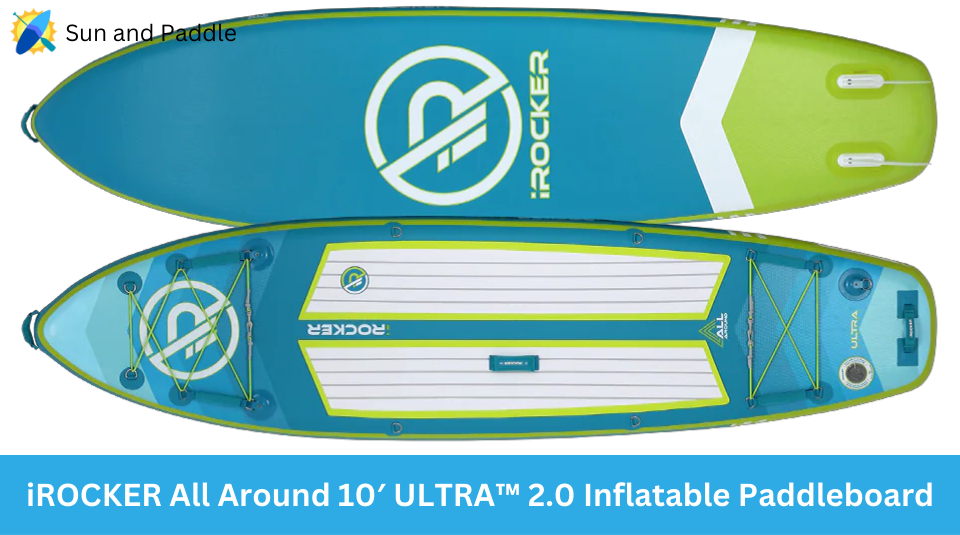
The IROCKER All Around 10′ Ultra™ 2.0 Inflatable Paddle Board is a high-performance board that is great for experienced paddlers.
The board is 10 feet long and 33 inches wide, providing a stable platform for paddling. The board is made of high-quality PVC material and comes with a pump, paddle, and storage bag.
10’6 Komodo Inflatable Stand-Up Paddleboard
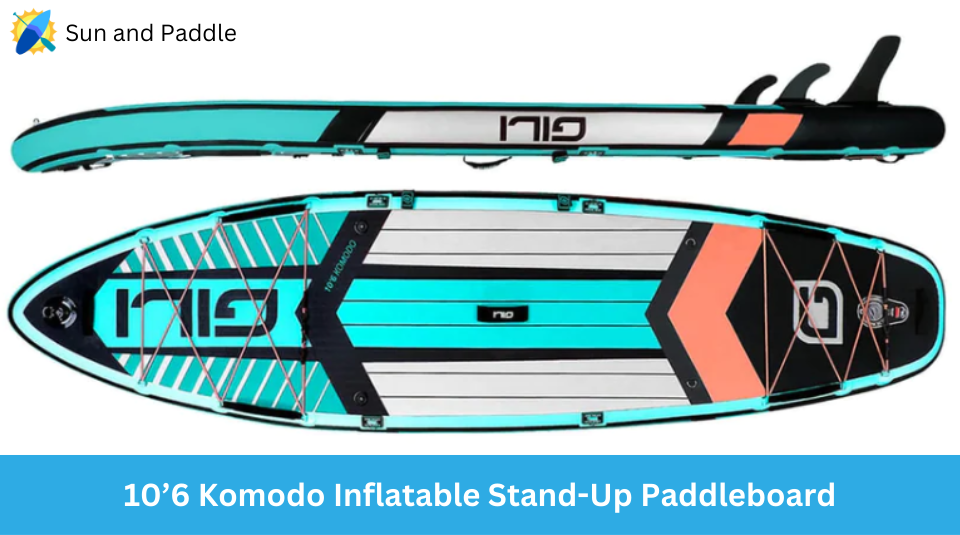
The 10’6 Komodo Inflatable Stand Up Paddle Board is a great option for paddlers who want a board that is both versatile and durable.
The board is 10 feet 6 inches long and 33 inches wide, providing a stable platform for all activities. The board is made of military-grade PVC material and comes with a pump, paddle, and storage bag.
Best Inflatable SUP Under $500: Isle Pioneer 2
If you are looking for a high-quality inflatable stand-up paddleboard (SUP) that won’t break the bank, the Isle Pioneer 2 is an excellent option to consider. This SUP is designed with affordability in mind, but it doesn’t sacrifice quality or performance.
The Isle Pioneer 2 measures 10’6″ in length and 32″ in width, making it stable and easy to maneuver.
It can support riders up to 240 pounds, which is impressive for a SUP in this price range.
One of the standout features of the Isle Pioneer 2 is its durable construction. It is made with military-grade PVC material and has a drop-stitch construction, which means it can withstand bumps, scrapes, and impacts without getting damaged.
The SUP also comes with a range of accessories, including a high-pressure pump, adjustable paddle, and carrying backpack.
The backpack is particularly useful for transporting the SUP to and from the water, as it makes it easy to carry everything in one convenient package.
In terms of performance, the Isle Pioneer 2 is stable and easy to control, making it suitable for beginners and intermediate paddlers.
It tracks well in the water and is surprisingly fast for an inflatable SUP.
How to Inflate a Stand-Up Paddleboard
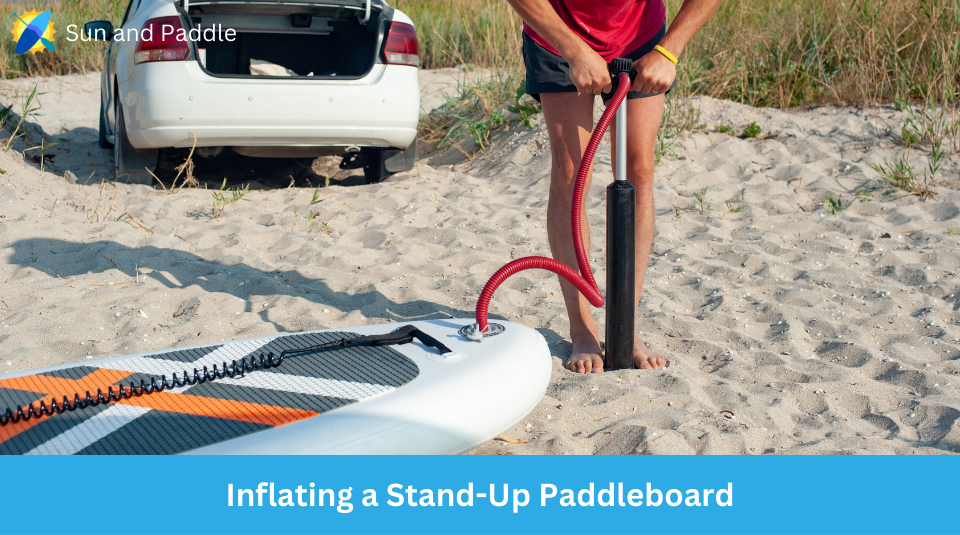
Step 1: Position your inflatable paddleboard on a landing mat or ground free of sharp objects
Step 2: Locate the SUP’s Valve
After unrolling and placing your paddleboard, locate the valve. The leash D-ring is typically located at the rear, past the deck pad, on paddle boards.
Step 3: Unscrew the Valve Cap
To release the valve, rotate the cap counterclockwise.
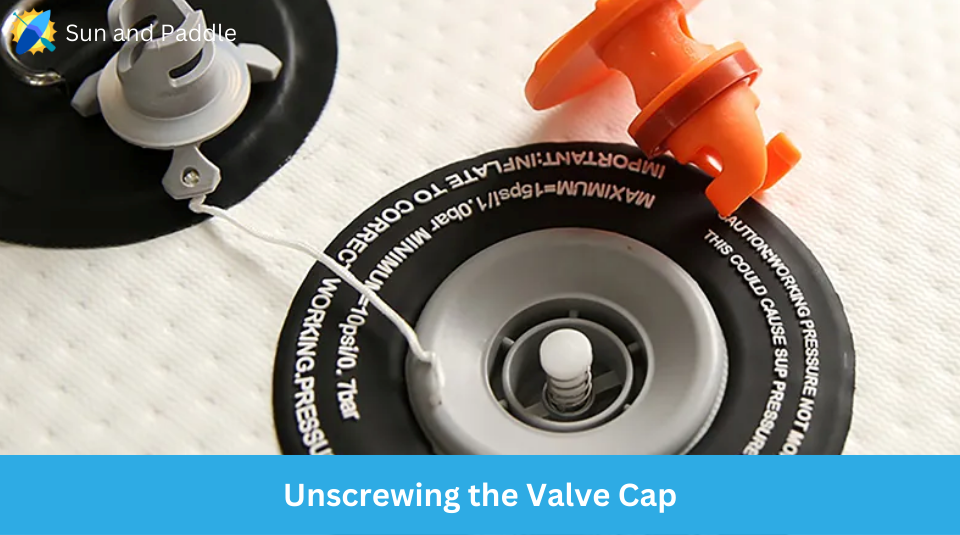
Step 4: Raise the Valve Pin
Step 5: Set Your Pump’s PSI to the Desired Value
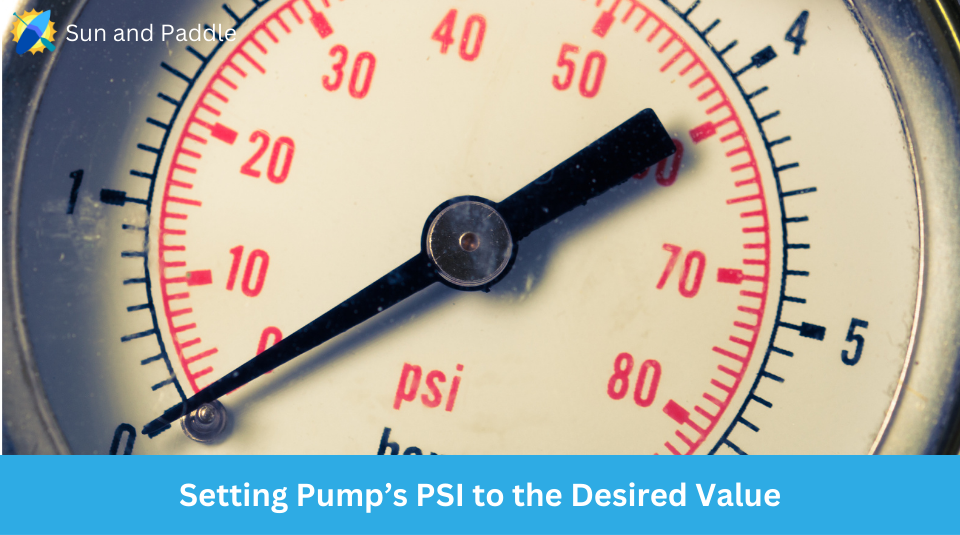
Step 6: Connect the pump hose to the pump
Step 7: Inflate Your Inflatable SUP Board
Step 8: Unplug the Pump
Step 9: Tighten the Valve Cap
Reinstall the valve closure and screw the valve cap back on. You’ve successfully learned how to inflate your SUP correctly.
SUP Electric Pump
A SUP electric pump is a great option if you want to inflate your board quickly and with minimal effort.
These pumps are powered by electricity and can inflate your board in a matter of minutes.
To use an SUP electric pump, you need to connect the pump to a power source and then attach the pump hose to the valve on your board.
Once you turn on the pump, it will inflate your board to the desired pressure automatically.
Outdoor Master Shark II SUP Electric Air Pump
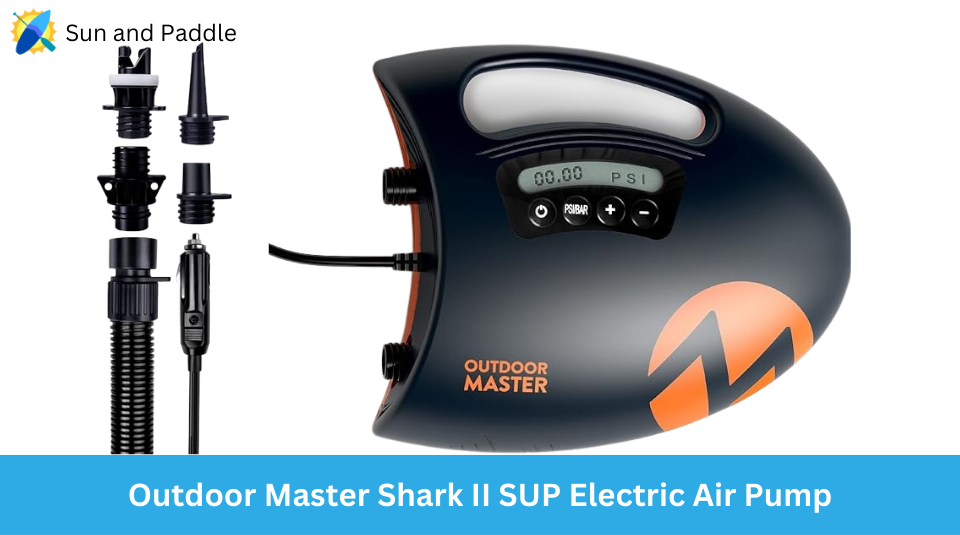
The Outdoor Master Shark II Air Pump will maintain its position as the finest electric pump on our list. you can have used this pump without issue for the past year and a half, and believe me, you can have put it through the mill. The incorporation of Outdoor Master’s patented shark cooling system enables us to fill up three boards consecutively without a break.
As for specifications, the Shark II can fill up to 20 PSI in approximately 12 minutes, and in our testing, a standard 10-foot board was inflated in just over 11 minutes. It also features an automatic shut-off, so you can set your desired PSI on the digital display and walk away without having to worry about running the motor too long or overinflating your board. Additionally, you can appreciate that the six valve options were not connected to the tubing by a string-like piece of plastic. Instead, the valve components are contained in a distinct bag within the Shark II packaging. When all the valve parts are connected, they get in the way when screwing and unscrewing the valve, as well as when wrapping the hose; this is one of our pet peeves.
The carry handle and oval shape of this pump make it simple to transport and store; it could fit in the front or main zipper pocket of most iSUP bags. The power cord can be wrapped around the handle for stowage and connects directly to your vehicle’s cigarette lighter, eliminating the need to open the hood and access the battery.
Overall, you can adore this pump and will likely continue to use it until it wears out. you can love that it’s quick, but you can love it even more that it can inflate more boards with less rest time. However, you can recommend exercising caution on exceptionally hot days, as the pump will be more susceptible to overheating. In addition, you can appreciate the 1-year warranty and have been pleased with Outdoor Master’s customer service.
SUP Pump Adapter
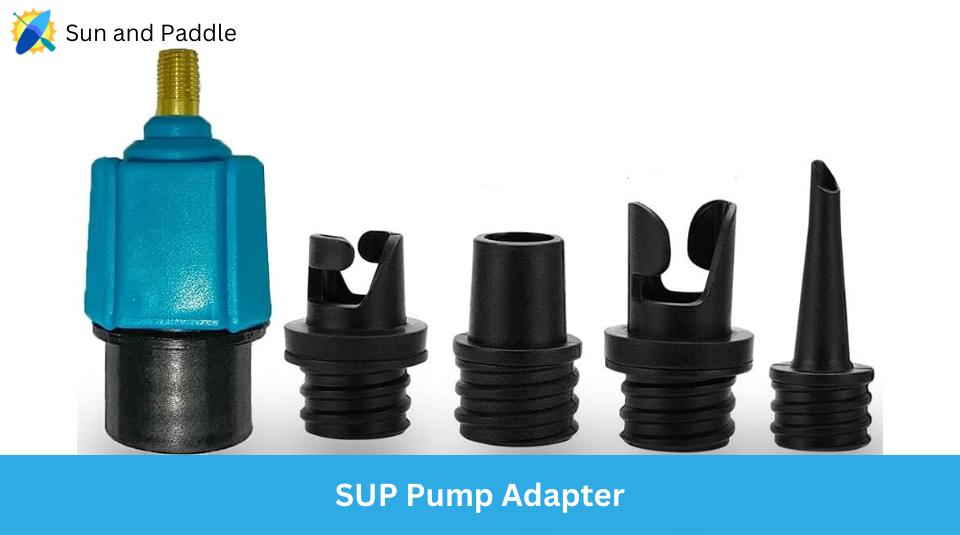
A SUP pump adapter is a small device that allows you to use an electric pump to inflate your board.
This adapter fits onto the valve of your board and allows you to connect the pump hose to the adapter.
Using an SUP pump adapter is a good option if you already have an electric pump and don’t want to buy a new one.
Heytur Inflatable Boat SUP Pump Adaptor
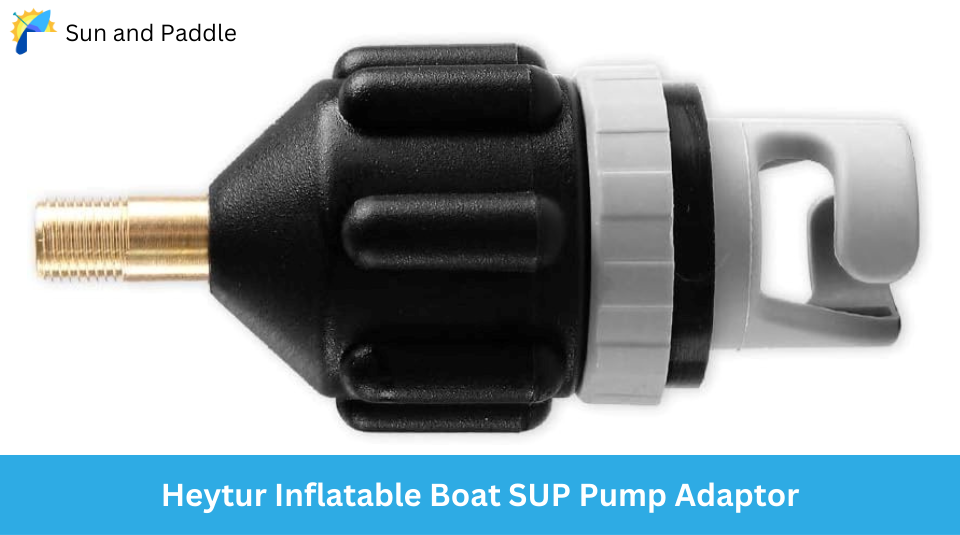
The Heytur Inflatable Boat SUP Pump Adapter is the first SUP pump adapter. This is an excellent option for those who wish to use their pump with an inflatable boat, kayak, or canoe but lack the proper valve. This adaptor features two threaded connections that can be utilized if you are pumping your board without the proper valves.
This SUP pump adaptor has a simplistic design, consisting of a round ball with an air valve attachment. The adaptor has no maintenance-required moving parts, and its design allows for simple installation onto your existing SUP pump.
This pump adaptor functions quite well with our inflatable boat, resulting in a noticeable performance boost. Given that it is designed to be attached to a SUP pump on one end and a SUP valve on the other, its mechanism is uncomplicated.
Air Compressor for Stand-Up Paddleboard
An air compressor is another option for inflating your SUP. If you have access to an air compressor, this can be a quick and easy way to inflate your board.
However, make sure to use a compressor with a low-pressure setting to avoid overinflating your board.
To use an air compressor, you need to connect the compressor hose to the valve on your board and turn on the compressor.
Hand Pump
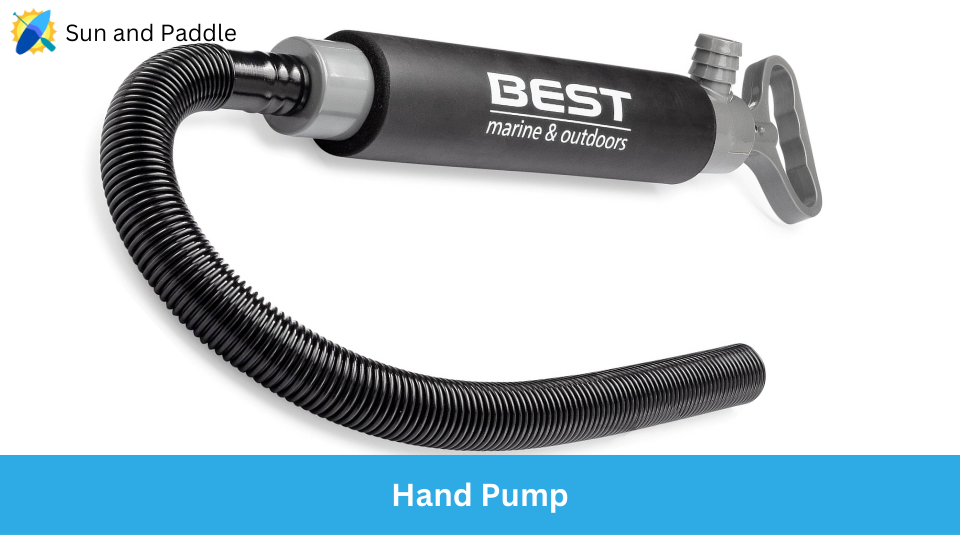
A hand pump is the most common way to inflate a stand-up paddleboard.
Hand pumps are portable, easy to use, and affordable. However, they require more effort and time compared to electric pumps.
To use a hand pump, you need to connect the pump hose to the valve on your board and then manually pump air into the board.
It’s important to monitor the pressure gauge on the pump to ensure that you’re inflating the board to the correct pressure.
NRS High-Pressure Super Pump
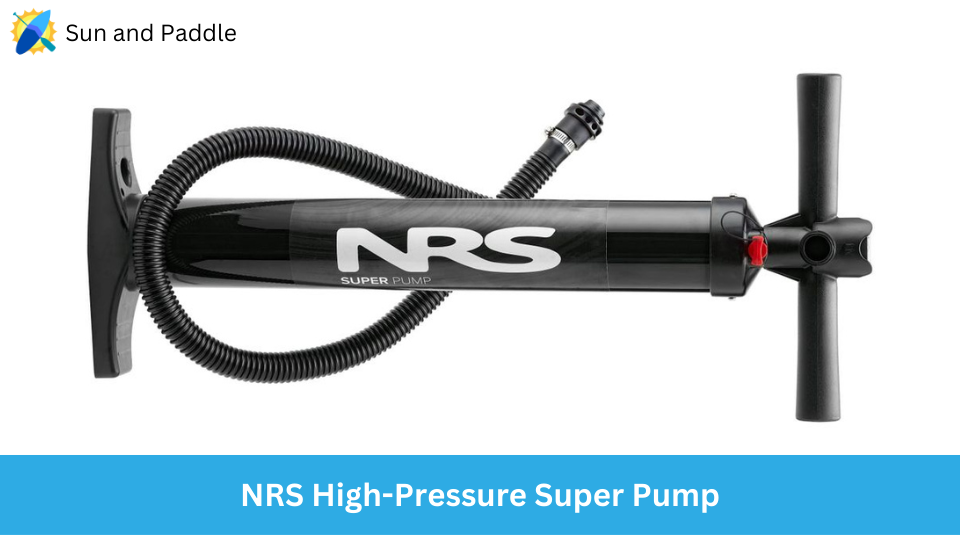
The NRS Super Pump is a budget-friendly option for SUP inflation with a durable construction. The single-chamber design is optimized for drop-stitch inflatable SUPs requiring pressures of 20 psi or less. Use the pump in dual-action mode to expedite the inflation process; when the board is nearly inflated, remove the red plug from the top-mounted port to transition to single-action mode.
This NRS pump is made of aluminum and polypropylene, making it light enough to carry into the backcountry and durable enough to use in severe conditions. At the conclusion of the journey, the deflate mode expedites the rolling up of the SUP. The NRS Super Pump is a great option for occasional hike-and-paddle excursions due to its low price and straightforward design.
Click here for more information about inflatable paddleboard pumps and additional choices.
How to Store an Inflatable Paddleboard
When it comes to storing your inflatable paddleboard, there are a few things you need to keep in mind to ensure it stays in good condition and lasts for as long as possible. Here are some tips on how to store your inflatable paddleboard:
On a Rack
One of the best ways to store your inflatable paddleboard is on a rack. This will keep it off the ground and prevent it from getting damaged.
Make sure the rack is sturdy and can hold the weight of the paddleboard. You can also use a rack with straps to keep the paddleboard in place.
Suspended
Another option is to suspend your inflatable paddleboard from the ceiling. This is a great way to save space and keep your paddleboard out of the way.
Make sure you use strong hooks or straps to hold the paddleboard in place. You can also use a pulley system to make it easier to hoist the paddleboard up and down.
Leaning
If you don’t have a lot of space, you can lean your inflatable paddleboard against a wall.
Make sure you place it in a corner or against a wall where it won’t get knocked over. You can also use a foam pad to protect the paddleboard from any scratches or dings.
Storage Tips
Tip 1: Before Storing Your Inflatable SUP, Clean It.
Always wash your inflatable SUP after each use to remove any grime, filth, salt, and bacteria that may have adhered to the PVC surface. Developing the habit of washing your board after each use will pay off in the long term.
When you take your inflatable SUP out on the water, bacteria, algae, and chemicals can accumulate and eventually deteriorate the board. Depending on where you launched your board, it may be necessary to wash your boat with detergent and water.
Washing your inflatable paddle board after each use will also eliminate the need to sanitize it before your next excursion. It is also important to pay special attention to the area around the valve to ensure that it is free of any debris that could penetrate the air chambers.
Tip 2: Do not use abrasive materials or cleansers
If you want your inflatable SUP to last, you should never scrub it when washing it. Sticky mud or grime will require a vigorous scrub. To avoid damaging the PVC, always use a soft brush or a piece of cloth to launder your paddleboards.
There are also chemicals that should never be used on an inflatable paddleboard; consult the owner’s manual to determine which soaps are acceptable. It is a good idea to occasionally wash your inflatable SUP with ordinary dish soap, but it is not required.
Tip 3: Dry Your Paddle Board Before Storing It
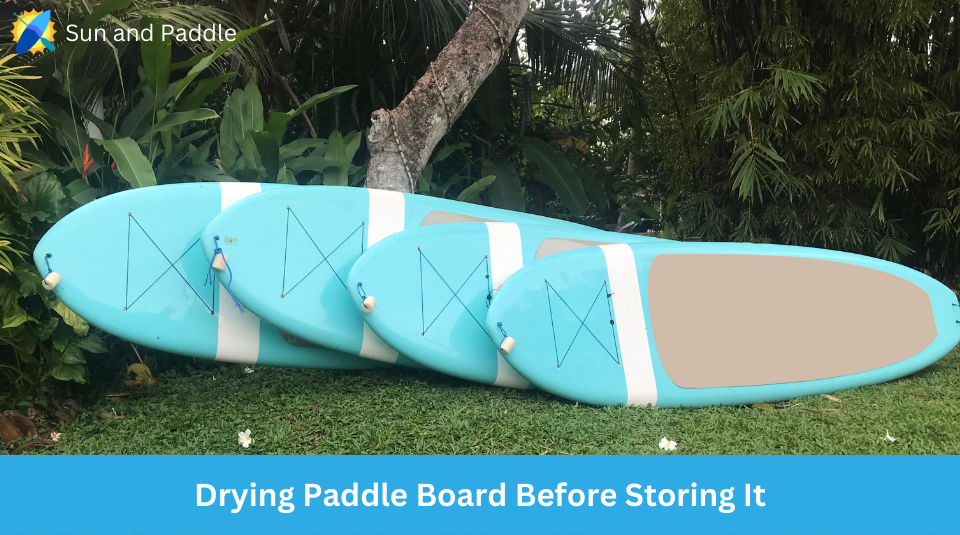
Ensure that your inflatable SUP is completely dry before storing it, particularly if you intend to place it inside a storage bag or box. This is true even if your dog becomes very interested in your board. While it is essential that you allow your inflatable SUP to dry out, you should avoid drying it in direct sunlight, as UV exposure is the natural adversary of PVC.
Also, ensure that the location where you intend to store your board is always and will remain dry. Mold and mildew can form on your paddleboard if it is left in a moist environment, which is detrimental to its longevity.
Tip 4: Each time you fold your paddleboard differently.
If you intend to disassemble your paddleboard for storage, be sure to alternate the folding direction each time. A pattern of repeated folding will cause creases and progressively wear down the same lines, increasing the likelihood of tearing.
It is advisable to have multiple folding and storage options for your inflatable SUP. However, if you use your inflatable SUP frequently (several times per week), you should keep it inflated to preserve its shape and save time before each use.
Tip 5: Do not store your paddle board in direct sunlight.
Exposure to direct sunlight will not damage your board, but it can cause the elastic materials to gradually expand and lose their rigidity. It is severe enough that when you take out your inflatable SUP, it will be exposed to UV rays. Keeping it in direct sunlight will hasten its deterioration.
If you must store your paddle board in direct sunlight, be sure to protect it from UV damage by covering it with a light-colored cover. The recommended storage temperature for an inflatable paddleboard is between 4 and 100 degrees Fahrenheit (5 and 40 degrees Celsius).
Tip 6: Take Off the Fins
If your inflatable SUP has removable fins or other accouterments, you should remove them all before storing it. Removing the fins from your iSUP allows you to store it in a flat position, averting damage during storage. Fins are also made of solid polyester, which is more susceptible to fracturing if not positioned correctly.
Frequently Asked Questions
What are the advantages of an inflatable paddle board over a hard paddle board?
Inflatable paddle boards have several advantages over hard paddle boards. They are much easier to transport and store because they can be deflated and rolled up into a compact size.
They are also more durable than hard paddle boards because they are made with high-quality materials that can withstand wear and tear.
Inflatable paddle boards are also more versatile because they can be used in a variety of water conditions, including calm lakes, rivers, and even ocean waves.
How much does a good quality inflatable paddle board typically cost?
The cost of a good quality inflatable paddle board can vary depending on the brand, size, and features. Generally, you can expect to pay anywhere from $300 to $1000 for a high-quality inflatable paddle board.
What should I look for when choosing an inflatable paddle board?
When choosing an inflatable paddle board, there are several factors to consider.
You should look for a board that is the right size and weight for your body type and skill level.
You should also consider the board’s stability, maneuverability, and speed. Other features to look for include the board’s weight capacity, the type of material it is made from, and the number of fins it has.
How long can I expect an inflatable paddle board to last with regular use?
With proper care and maintenance, you can expect an inflatable paddle board to last for several years.
Most high-quality inflatable paddle boards are made with durable materials that can withstand wear and tear.
However, it is important to follow the manufacturer’s instructions for care and maintenance to ensure the board lasts as long as possible.
Can inflatable paddle boards be used in different types of water conditions?
Yes, inflatable paddle boards can be used in a variety of water conditions, including calm lakes, rivers, and even ocean waves.
However, it is important to choose a board that is appropriate for the conditions you will be using it in.
For example, if you plan to use your board in rough ocean waves, you should choose a board that is designed for that type of water condition.
What is the process for inflating and deflating paddle boards for storage?
The process for inflating and deflating paddle boards is relatively simple. To inflate the board, you will need a pump that is designed for inflatable paddle boards.
Simply attach the pump to the valve on the board and pump until the board is fully inflated.
To deflate the board, simply remove the pump and open the valve to release the air. Roll up the board tightly and store it in a dry, cool place.

